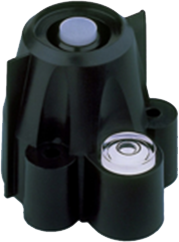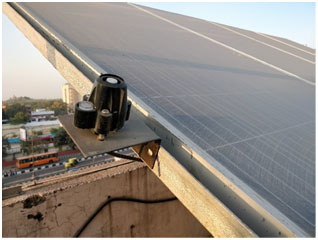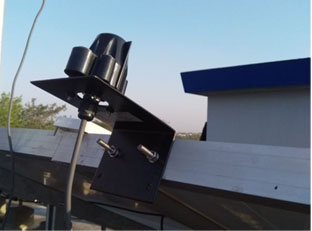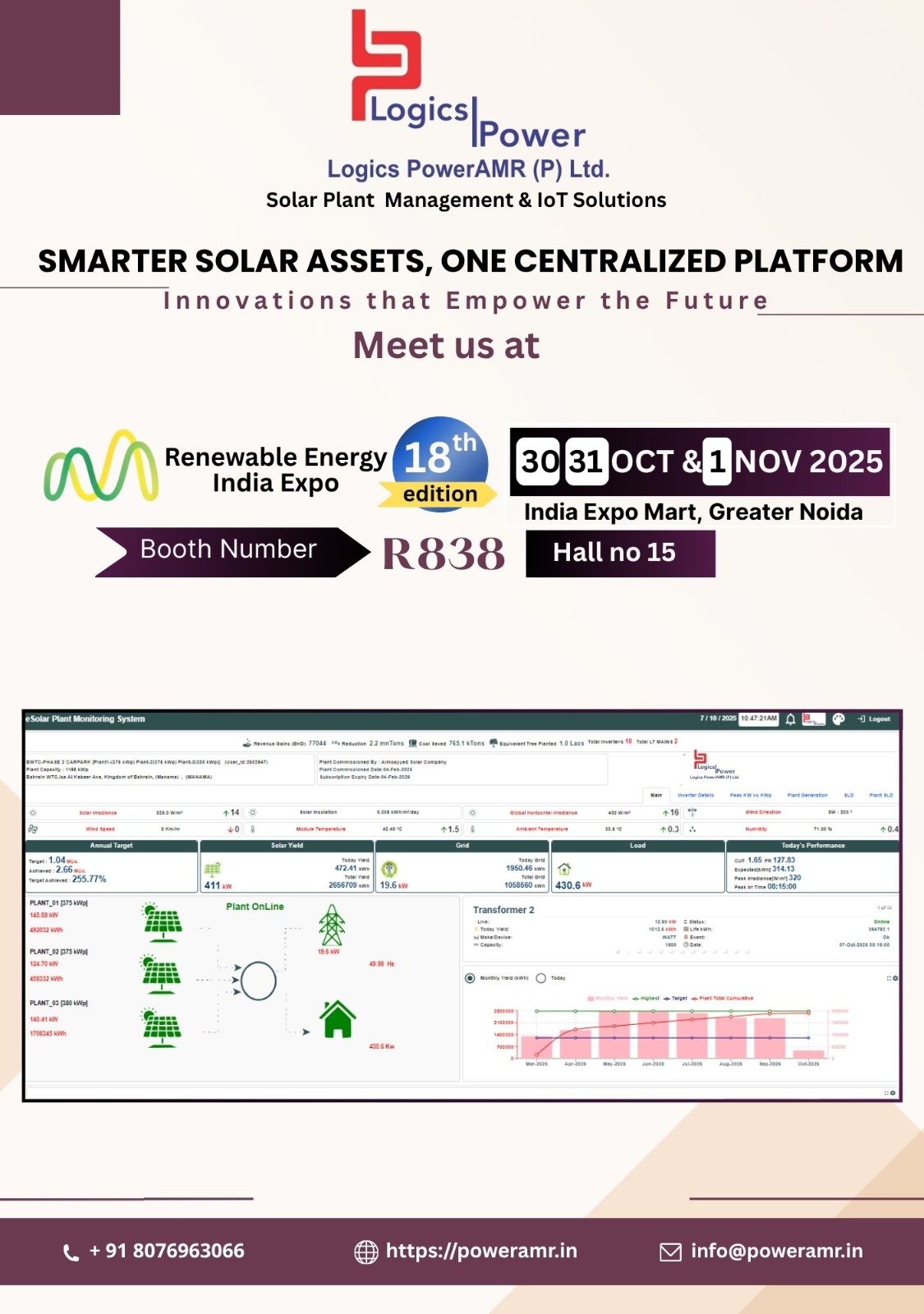Solar Radiation Sensor Pyranometer 300V
Buy Pyranometer or Solar Radiation Sensor Pyra 300V at best price in India.

Solar Radiation Sensor Pyra 300V
The Solar Radiation Sensor, or solar pyranometer, measures global radiation, the sum at the point of measurement of both the direct and diffuse components of solar irradiance. The sensor’s transducer, which converts incident radiation to electrical current, is a silicon photodiode with wide spectral response. From the sensor’s output voltage, the console calculates and displays solar irradiance. It also integrates the irradiance values and displays total incident energy over a set period of time.
Pyranometer is to be located far from any kind of obstruction, which might reflect sunlight (or sun shadow) onto the pyranometer itself.
The sunlight sensor must be installed at the same azimuth and tilt angle than the PV array.
Key Features of Pyranometer & Solar Radiation Sensor Pyra 300V
The Pyra 300V solar radiation sensor/pyranometer is a high quality instrument suitable for a variety of PV planning and research uses. Here are key features:
Precise Measure Solar Irradiance: Sensor measures not only direct but also diffused sunlight,which makes more reliable energy monitoring.
Broad Spectral Response: Ranges from 400 to 1100 nm to provide highly accurate results in various solar conditions.
Rugged Design: Ideal for outdoor installations, the IP-66 rated enclosure protects against windblown dust, rain, splashing water, and hose-directed water.
Live Data Feed: The THP-HD sensors convert sunlight into electrical signals with an output that is both IoT and SCADA compatible.
Simple Installation & Alignment: Can be mounted to face the PV array tilt and azimuth to reduce measurement errors.
Low Drift & High Stability: Ensures long-term accuracy with minimal yearly drift.
Specifications
| Operating Temperature : | -40° to +65° C | Storage Temperature : | -45° to +70°C |
| Transducer : | Silicon photodiode | Spectral Response : | 400 to 1100 nanometers Cosine Response |
| Percent of Reading : | ±3% (0° to ±70° ), ±10% (±70° to ±85° ) | Percent of Full Scale : | ±2% (0° to ±90°) |
| Temperature Coefficient : | + 0.12% per °C | Reference temperature : | 25°C |
| Housing Material : | UV-resistant PVC plastic | Weight : | 250 g |
| Range : | 0 to 1800 W/m2 | Accuracy : | ±5% of full scale |
| Drift : | up to ±2% per year | Output : | 0 to 5 VDC (0- 1800 w/m2) |
| Power supply : | 7- 24 VDC 1mA (typical) |
Applications of Pyranometer, Solar Radiation Sensor, and Irradiation Sensor
The Pyra 300V Pyranometer, solar radiation sensor, along with irradiation sensor are used across a wide range of applications where actually precise solar measurement is crucial:
| Application Area | Use Case | Benefits |
|---|---|---|
| Solar PV Plants | Monitors irradiation for rooftop and ground-mounted solar systems | Optimizes energy generation, improves forecasting, and enhances system efficiency |
| Weather Stations & Meteorology | Measures global radiation for climate monitoring | Provides accurate environmental data for research and analysis |
| Agriculture & Greenhouses | Tracks sunlight for crop growth optimization | Supports precision agriculture and energy-efficient greenhouse management |
| Research & Academia | Solar energy and environmental studies | It ensures precise data for experiments, modeling, and simulation |
| Smart Cities & IoT Projects | Integrates with IoT/SCADA for real-time monitoring | Enables remote monitoring, predictive maintenance, and energy optimization |
Using the Pyra 300V Pyrometer and solar irradiation sensor in these applications allow for accurate irradiation measurement, ensuring better decision-making, higher solar plant efficiency, and reliable energy management.
Why Choose Logics PowerAMR
When you choose Logics PowerAMR, it ensures you get not only high-precision pyranometer and solar radiation sensor, but also get unmatched technical support and system integration expertise. Our sensors are calibrated to provide maximum accuracy, compatibility with IoT and SCADA platforms, and designed in order to optimize PV plant performance. With Logics PowerAMR, you benefits from:
Expert guidance on sensor selection and installation Reliable and consistent irradiation measurements Seamless integration with remote monitoring systems Long-term durability and reduced maintenance costs
Mounting
| Using the bubble level on the sensor as a guide, adjust the sensor until it is level by tightening or loosening the screws. The top of the Solar Radiation sensor should be even with or slightly above the rim of the rain cone. The entire comb structure of the UV Radiation sensor should be above the rim of the rain cone. | |
| Final leveling of the sensor(s) should be done with the ISS mounted in its operating location. | |
| Ensure that the cables are free of crimps. Secure them to the support tubes with the provided cable ties so that they will not fray in the wind. | |
| Shade the sensor and make sure the reading changes. |





